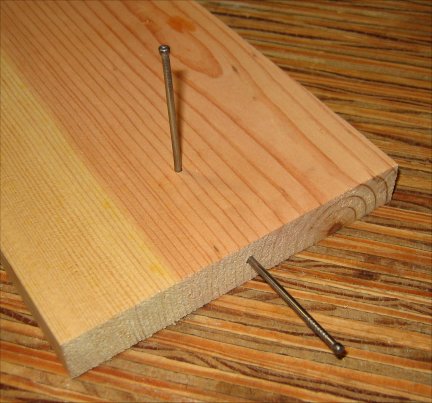

|
Part II: The JointOver three decades ago I walked into a used bookstore in the historic district of a Midwestern town and beheld an extraordinary array of bookcases that shelved what had to be over 100,000 books. I wasn't there to buy books; I'd been called to the scene by the proprietor, who needed even more bookcases. A friend of hers had built the original units but was no longer available, she explained, and, after leading me up to one of them, then asked, "Can you build me something to match this?" "I can," I said, "but I won't." "Excuse me?" I didn't say so at the time, but this friend of hers had done her no favor. The bookcases were constructed out of ¾" 1 x 10 pine boards - fine as far as it went - but the shelves had been attached to the sides simply by hammering nails in from the sides. Perhaps some backing would've helped overcome this, but as it was, it was scary. I explained to her that the only things keeping these bookcases in place were gravity and the "support" from adjoining bookcases, and there was at least a possibility that an entire wall of them could come down if one were to give a push at either end of a row. Also, the situation would only worsen over time. The first bookcase I recall making - I think I was nine or so - was constructed exactly like these bookcases, so I do understand that there's something intuitive in the approach, also some precedence. Framers, for example, hammer nails into end grain all day long. The problem is that it violates a first principle of woodworking and simply won't do for free standing bookcases. This can be readily explained with a photograph:

The nail on the right has been hammered into end grain. With a little effort I could pull it out with my bare hand. Why? Because the fibers of the wood run parallel to the nail; the nail is merely wedged between the fibers and there's little resistance offered when removing it. The nail on the left, however, has been driven in perpendicular to the grain and would likely require a tool to remove because fibers were broken as it was pounded in and the resulting internal splintering offers significant resistance when the nail is pulled in the opposite direction, sort of like a Chinese finger trap - easy to push your fingers into, difficult to get them back out. Use a screw instead of a nail, and the resistance is exceptional.
>>>>> Article continues on next page >>>>>
Questions or comments?
| Forum
| Store
| Publications
| BookLinks
| BookSearch
| BookTopics
| Archives
| Advertise
| AboutUs
| ContactUs
| Search Site
| Site Map
| Google Site Map
Store - Specials
| BookHunt
| BookShelf
| Gold Edition & BookThink's Quarterly Market Report
| DomainsForSale
| BookThinker newsletter - free
Copyright 2003-2011 by BookThink LLC
|

|
|